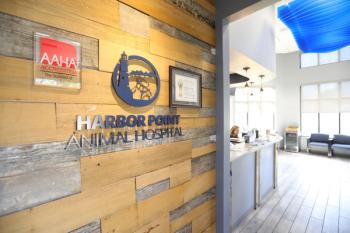
AVMA delegates address 16 resolutions from animal welfare to drug compounding
New Orleans - Delegates from across the country considered 16 resolutions - some contentious, such as the one to support changes in veal husbandry - at the AVMA House of Delegates (HoD) meeting in late July.
New Orleans
- Delegates from across the country considered 16 resolutions - some contentious, such as the one to support changes in veal husbandry - at the AVMA House of Delegates (HoD) meeting in late July.
One resolution calling for a ban on antimicrobials used for growth promotion and feed efficiency was silenced, but still fueled many conversations throughout the conference.
Because the resolution (#15) didn't reach the discussion phase, an opposing resolution, #18, calling for veterinary input into the decision of antimicrobial use in livestock feed, was withdrawn.
Here are voting results on all resolutions presented:
RESOLUTION 1 sought to eliminate the position of AVMA vice president: failed, 88.6 percent to 11.4 percent.
RESOLUTION 2 proposed that the USDA Food Safety and Inspection Service (APHIS) be encouraged to add more veterinary positions and hire more veterinarians to adequately enforce the Humane Methods of Slaughter Act: passed, 97.8 percent to 2.2 percent.
RESOLUTION 3 proposed that delegates, alternates and allied organizations represented in the House of Delegates be encouraged to engage in active grass-roots support for funding of the Food Animal Residue Avoidance Databank: passed unanimously.
RESOLUTION 4 called for increased AVMA involvement with veterinary students: passed, 97.8 percent to 2.2 percent.
RESOLUTION 5 proposed that the AVMA develop a Student Affairs Division dedicated to student issues and concerns, and that the funds dedicated for the vice president to visit the schools be redirected to the Student Affairs Division: failed, 87.7 percent to 12.3 percent.
RESOLUTION 6 called for the AVMA to develop a Model Certificate of Veterinary Inspection for the Domestic Travel of Companion Animals: passed, 98.1 percent to 1.9 percent.
RESOLUTION 7 proposed that the FDA Center for Veterinary Medicine be encouraged to strictly enforce its rules prohibiting drug compounding that produces unapproved mimics of commercially available FDA-approved drugs: passed, 94.5 percent to 5.5 percent.
RESOLUTION 8 proposed AVMA support of identification of livestock to enable trace-back and trace-forward of animals for the purpose of disease control and eradication programs: passed unanimously.
RESOLUTION 9 called for AVMA participation and support of the One Health Initiative: passed, 99.7 percent to 0.3 percent.
RESOLUTION 10 proposed that the AVMA promote evidence-based research on canine influenza virus and its potential effects on both animal and human health: failed, 96.7 percent to 3.3 percent.
RESOLUTION 11 seeks to make it a legislative priority for veterinarians to receive equitable pay in public practice, compared to other health professions: passed, 99.4 percent to 0.6 percent.
RESOLUTION 12 calls for equal pay for equal work for veterinarians and physicians as part of the One Health Initiative: failed, 79.4 percent to 20.6 percent.
RESOLUTION 13 calls for the AVMA to encourage the NCVEI (National Commission on Veterinary Economic Issues) to 1) study economic factors impacting veterinarians in federal and state public practice and academia; 2) evaluate how these factors compare with allied health professions, and how these factors affect allied professions; and 3) make recommendations on how to close any gaps that currently exist and to prevent gaps from growing with time: passed, 74.8 percent to 25.2 percent. (A vote to amend the wording of the legislation was approved 92.7 percent to 7.3 percent.)
RESOLUTION 14 calls for the AVMA to support a change in veal-husbandry practices from the individual calf crate system that severely restricts movement to group housing systems that allow for freedom of movement and socialization in order to enhance the welfare of calves contained therein: referred to Animal Welfare Committee, 64.3 percent to 35.7 percent.
RESOLUTION 15 to amend the policy on antimicrobials in livestock feeds: not approved for discussion.
RESOLUTION 16 called for the AVMA to support a change in veal-husbandry practices that severely restrict movement, to housing systems that allow for greater freedom of movement without compromising their health or welfare: move to the welfare committee, passed, 75.2 percent to 24.8 percent; amended wording, passed, 68.7 percent to 31.3 percent; resolution passed as amended, 88.7 percent to 11.3 percent.
RESOLUTION 17 that the AVMA actively promote the implementation of linking companion- animal microchip databases: passed, 97.3 percent to 2.7 percent.
RESOLUTION 18 calls on AVMA to collaborate and develop mechanisms for veterinary input into antimicrobials into livestock feeds: withdrawn.
To read more on the AVMA resolutions, click
Newsletter
From exam room tips to practice management insights, get trusted veterinary news delivered straight to your inbox—subscribe to dvm360.






